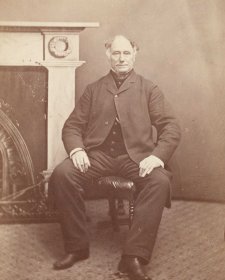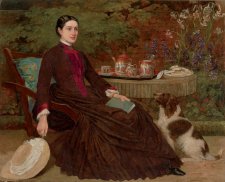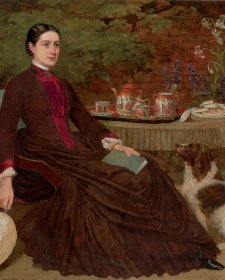William Robertson (1798–1874), pastoralist and entrepreneur, was born in a village south of Inverness, Scotland, one of the eight children of farmer Donald Robertson and his wife Christina. With his brother, John, he emigrated to Van Diemen’s Land in 1822. They took up a 1400 acre land grant before establishing a business with their younger brothers, James and Daniel, on Elizabeth Street, Hobart, in 1832. In September 1834, he married Margaret Whyte (1811–1866), the daughter of free settlers George and Jessie Whyte, who had emigrated from Scotland in 1832. The first of William and Margaret’s seven children – three daughters and four sons – was born in 1835. By this time, Robertson had amassed sufficient capital to join a number of other investors in a scheme to expand pastoral activities to the Port Phillip district. These investors – known as the Port Phillip Association – helped finance John Batman’s explorations of Port Phillip in 1835, during the course of which Batman made a so-called ‘treaty’ with the local Aboriginal people that became the basis for his land claim. Robertson travelled to Port Phillip in 1836 and 1837, selecting land near present-day Sunbury and, later, Colac. By the late 1840s, he was a major landholder, his properties stocked with ‘the best bulls and cows that could be got in the colonies’. Robertson oversaw the operation of his pastoral empire from his home in Hobart until retiring from his business in 1852. He settled permanently at his Colac property, The Hill, in the 1860s, and was described on his death in 1874 as ‘a founder of Victoria’s fortunes’.
William Robertson was a significant patron of local artists.
Gift of Fiona Turner (née Robertson) and John Robertson 2011. Donated through the Australian Government's Cultural Gifts Program.
William Robertson (age 54 in 1852)



On one level The Companion talks about the most famous and frontline Australians, but on another it tells us about ourselves.



20 July 2023
To celebrate his family bicentenary, Malcolm Robertson looks at the portraiture legacy left by his ancestors.



Malcolm Robertson tells the family history of one of Australia's earliest patrons of the arts, his Scottish born great great great grandfather, William Robertson.